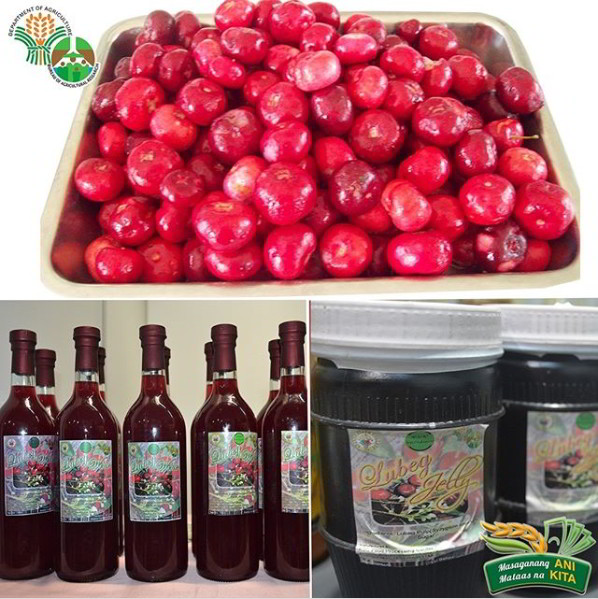This is the usual scenario of most indigenous fruit trees. They abound in a particular area but they remain underutilized not because they have no value but most people do not know their uses. Their potentials are not yet explored and therefore they remain ignored and unappreciated.

A tree teeming with fruits. But that all it is. In normal days, it serves as shade for those want to cool off from the scorching heat of the sun, and its fruits, falling from the tree just littered around the ground, left to rot and unconsumed.
Over the years, the campaign of the Philippine government of “Food for All” has been intensified. Many indigenous plants, which were once disregarded have now been explored and more people have discovered their value, thus responding not only to food security but also as source of income especially among rural communities.
One promising indigenous fruit bearing tree is the Lubeg, found abundantly in Apayao and some parts of Cagayan. To further study its potentials, the Apayao State College (ASC) led the exploration and commercialization of this particular fruit.
Knowing Lubeg
Lubeg (Syzygium lineatum), locally known as Malubeg and Alebadu, belongs to the Myrtaceae family. It is a fruit tree that reaches up to five meters in height and commonly grows in shaded and open areas. Due to its size, the tree is usually used as a shade and live fence. Its leaves are simple attached to the stem oppositely arranged, ovoid to elliptical in shape measuring on about 8-10 cm, and sour in taste. Its flowers have an inferior ovary, regular and complete.
Lubeg fruits appear in cluster, whitish at first but turn red to violet when ripe. It is best described by the locals as cherrylike fruit with thick, fleshy, spongy, and brittle rind with size that can reach up to 13 mm long.
It belongs to the Syzygium genus just like duhat (Syzygium cumini) and lipote (Syzygium curranii) and can be eaten fresh. It has a citrusy taste and can be used as a souring agent in dishes like sinigang. Various plant species belonging to Syzygium genus possess polyphenols, micronutrients found in edible plants. According to literatures, polyphenols prevents acquiring cancer and cardiovascular and neurodegenerative diseases. Commonly, fruits and beverages such as tea and red wine are rich sources of polyphenols.
Adding value to Lubeg
Harnessing the health benefits and its potential as a profitable agribusiness enterprise, ASC researchers gave economical value to Lubeg and other indigenous fruits in Apayao such as Bignay kalabaw. and Balayang (wild banana). With funding support from the Bureau of Agricultural Research (BAR), ASC implemented a project to develop, promote, and commercialize processing technologies for the Apayao’s indigenous fruits.
The research team was able to develop Lubeg products including wine, fruit juice and concentrates, jam, jellies and syrups, and vinegar. The Lubeg jam and jelly are also used as fillers for baked products such Inipit, custard cake, cupcake, and doughnut. They also tried making a variety of flavors such as Lubeg-pineapple fillings and Lubeg-lemongrass juice. A sensory evaluation was done for Lubeg wine to see its performance against other fruit wines such as Bignay and duhat. Results showed that Lubeg is much preferred by consumers that the other two fruits.
As the project is hope to be elevated as an agribusiness enterprise, ASC tapped two people’s organizations: Pudtol Agrarian Reform Beneficiaries Multipurpose; and Women’s Welfare Organization (WWO)- Luna, to handle the processing and commercialization of the Lubeg products. Members were trained on baking, wine-making, and packaging and labelling.
ASC is already able to secure utility models at the Intellectual Property Office for the Lubeg wine and fruit preserves. ###
Source: bar.gov.ph


Hello! I am an undergraduate student looking into studying Lubeg. Would you know who and where I can contact the locals that sell Lubeg wine or the fruit itself?